- عنوان کتاب: DC–DC Converters for Future Renewable Energy Systems
- نویسنده: Neeraj Priyadarshi
- حوزه: انرژی تجدید پذیر
- سال انتشار: 2022
- تعداد صفحه: 480
- زبان اصلی: انگلیسی
- نوع فایل: pdf
- حجم فایل: 16.1 مگابایت
این کتاب مدلسازی و تحلیل مبدلهای DC-DC را برای سیستمهای انرژی تجدیدپذیر آینده شرح میدهد. فصل 1 به محققان کمک می کند تا درک کاملی در مورد طراحی جزء کلیدی DCMG (ریزشبکه DC) یعنی مبدل DC-DC بدست آورند. این اجازه می دهد تا عملیات کنترل در منابع انرژی تجدیدپذیر به هم پیوسته (RES)، سیستم های ذخیره انرژی (ESS) و بارهایی که در سطوح ولتاژ مختلف به یک باس DC مشترک کار می کنند انجام شود. در فصل 2، توصیف مبدلهای با بهره بالا DC-DC با سیستمهای مختلف مبتنی بر فتوولتائیک خورشیدی (PV) ارائه شده است، و سپس، یک مبدل تقویتکننده باک بهره بالا (IHGBBC) مناسب برای سیستمهای مبتنی بر PV نشان داده میشود. یک مبدل تقویت کننده با ساختار تعمیم یافته سلول تقویت کننده درجه دوم در فصل پیشنهاد شده است. 3. ساختار پیشنهادی با داشتن سه سلول تقویت کننده درجه دوم (n = 3) می تواند با تنظیم تعداد سلول های درجه دوم در ساختار سلول درجه دوم تعمیم یافته با نسبت وظیفه مناسب (d) مقدار زیادی ولتاژ DC خروجی را از ولتاژ DC با قدر پایین تولید کند. فصل 4 روش طراحی مبدل فلای بک (230 ولت DC-5 ولت DC) را نشان می دهد که در حالت هدایت ناپیوسته کار می کند. اینورتر کنترل نقطه خنثی سه سطحی و پنج سطحی (اینورترهای چند سطحی NPC) که برای تبدیل کنترل DC به AC مورد استفاده قرار می گیرد در فصل توضیح داده شده است. 5. در فصل. 6، یک مبدل DC-DC با خازن سوئیچ دو طرفه به عنوان یک رابط الکترونیکی قدرت برای ریزشبکه ها پیشنهاد شده است. فصل 7 مبدل های پیشرفته LUO مورد استفاده برای کاربردهای انرژی تجدیدپذیر را با جزئیات ارائه می کند و شبیه سازی این مبدل ها ارائه شده است. بررسی عملکرد سیستمهای تبدیل انرژی خورشیدی (SECS) با یکپارچهسازی مبدل فوقبالابر مبدل DC/DC پیشرفته (SLLC) در فصل بحث شده است. 8. فصل 9 تجزیه و تحلیل دقیق مبدل های تقویت کننده درجه دوم سلف غیر جفت شده بدون ترانسفورماتور را توضیح می دهد. فصل 10 طراحی و مدلسازی شبیهساز فتوولتائیک (PV) با استفاده از مبدل باک DC-DC در MATLAB/Simulink و اجرای سختافزار آن با استفاده از کنترلکننده آردوینو را ارائه میکند. در فصل 11، یک سیستم توزیع ولتاژ پایین DC (LVDC) هوشمند در زمان واقعی برای استفاده از توان ریزشبکه هیبریدی DC ساخته شده از فتوولتائیک خورشیدی (SPV) و سیستم های تبدیل انرژی باد (WECS) طراحی شده است. در این کار، یک مبدل DC-DC نقش اصلی را برای دستیابی به سیستم توزیع پیشنهادی ایفا می کند. فصل 12 رویکردی را با استفاده از مبدل ورودی چندگانه (MIC) برای تحقق حداکثر توان فردی از ماژولهای فتوولتائیک ارائه میکند. فصل 13 مروری بر روشهای کنترل و طراحی پارامترهای مبدل برق دو پل فعال (DAB) قابل استفاده در سیستم انرژیهای تجدیدپذیر را ارائه میکند. فصل 14 بر استراتژی تشخیص خطا مبتنی بر سیگنال فرکانس بالا برای شناسایی خطای مدار باز (OCF) و خطای اتصال کوتاه (SCF) در سیستم درایو PMSM مبتنی بر مبدل برق منبع ولتاژ دو سطحی تمرکز دارد. فصل 15 مدل سازی مبدل های مختلف DC-DC را برای کاربردهای انرژی سبز توضیح می دهد. فصل 16 بر طراحی و تجزیه و تحلیل مبدل باک DC-DC با الگوریتم MPPT بدون رانش برای یک سیستم تولید انرژی بادی مبتنی بر ژنراتور القایی خود تحریکشده (SEIG) تمرکز دارد. فصل 17 طراحی پانل های سیستم فتوولتائیک سقفی (RTPV) متصل به مبدل تقویت کننده با اینورتر و باتری ها را توضیح می دهد. طراحی و پیاده سازی ماشین همزمان مجازی (VSM) در ریزشبکه (MG) در فصل توضیح داده شده است. 18. در فصل. 19، انواع غالب مبدلهای الکترونیک قدرت DC-DC مورد استفاده برای کاربردهای انرژی سبز به تفصیل مورد بحث قرار گرفتهاند. فصل 20 ردیاب نقطه حداکثر توان مبتنی بر اینترنت اشیا (IoT) را برای سیستم پمپاژ آب فتوولتائیک مبتنی بر موتور DC بدون جاروبک (BLDC) پیشنهاد میکند. علاوه بر این، یک مبدل تقویت کننده دو سطحی برای به دست آوردن ولتاژ خروجی بالا با راندمان افزایش یافته استفاده می شود و در مقایسه با مبدل تقویت کننده کلاسیک عملکرد اقتصادی دارد. مبدل باک-بوست مرتبه چهارم سوئیچ با استفاده از کنترلرهای نوع II و نوع III در برنامه های شبکه DC در فصل مورد بحث قرار گرفته است. 21. طراحی کنترل کننده سرب PI مرتبه کسری مبدل برق DC-DC برای کاربردهای انرژی تجدیدپذیر در فصل توضیح داده شده است. 22. فصل 23 مدیریت توان سیستم PV یکپارچه با باتری با مبدل دو طرفه کنترل شده با کنترل کننده حالت کشویی (SMC) را توضیح می دهد. بررسی اجمالی توپولوژی مبدل های DC-DC دو طرفه برای وسایل نقلیه الکتریکی و سیستم انرژی تجدید پذیر در فصل مورد بحث قرار گرفته است. 24. فصل 25 مبدل تقویت کننده معمولی (CBC) و مبدل تقویتی میان لایه (IBC) را با منابع PV که برای دستیابی به حداکثر ولتاژ از مبدل برای کاربردهای انرژی سبز طراحی شده اند، بررسی می کند.
This book describes modeling and analysis of DC–DC converters for future renewable energy systems. Chapter 1 will help researchers to get a thorough understanding about the design of key component of the DCMG (DC microgrid), i.e., DC–DC converter. It allows control operation to take place in interconnected renewable energy sources (RES), energy storage systems (ESS) and loads operating at different voltage levels to a common DC bus. In Chap. 2, the description of DC–DC high gain converters with different solar photovoltaic (PV)-based systems is presented, and then, an improved high gain buck–boost converter (IHGBBC) suitable for PV-based systems is demonstrated. A boost converter with the generalized structure of quadratic boosting cell is proposed in Chap. 3. The proposed structure having three quadratic boosting cells (n = 3) can produce a high magnitude of output DC voltage from a low-magnitude DC voltage by adjusting the number of quadratic cells in the generalized quadratic cell structure with an appropriate duty ratio (d). Chapter 4 portrays the procedure to design a flyback converter (230 V DC–5 V DC) functioning under discontinuous conduction mode. The three-level and five-level of neutral point control inverter (NPC multilevel inverters) utilized for DC to AC control transformation are explained in Chap. 5. In Chap. 6, a bidirectional interleaved switched capacitor DC–DC converter is proposed as a power electronic interface for microgrids. Chapter 7 presents advanced LUO converters used for renewable energy applications in detail, and simulations of these converters are presented. The performance review of solar energy conversion systems (SECS) with the integration of the advanced DC/DC converter super-lift Luo converter (SLLC) is discussed in Chap. 8. Chapter 9 explains a detailed analysis of transformerless non-coupled inductor quadratic boost converters. Chapter 10 presents the design and modeling of photovoltaic (PV) emulator using DC–DC buck converter in MATLAB/Simulink and its hardware implementation utilizing Arduino controller. In Chap. 11, a smart low-voltage DC (LVDC) distribution system is designed in real time to utilize the power from hybrid DC microgrid made of solar photovoltaic (SPV) and wind energy conversion systems (WECS). In this work, a DC–DC converter plays a major role to achieve the proposed distribution system. Chapter 12 presents an approach using multiple input converter (MIC) to realize individual maximum power from photovoltaic modules. Chapter 13 presents the overview of control methods and parameter designing of the dual active bridge (DAB) power converter, applicable in the renewable energy system. Chapter 14 focuses on high-frequency signal-based fault diagnosis strategy for open-circuit (OCF) and short-circuit fault (SCF) identification on two-level three-phase voltage source power converter-based PMSM drive system. Chapter 15 describes modeling of different DC–DC converter for green energy applications. Chapter 16 focuses on the design and analysis of DC–DC buck converter with drift-free MPPT algorithm for a self-excited induction generator (SEIG)-based wind energy generation system. Chapter 17 explains design of roof-top photovoltaic system (RTPV) panels connected to the boost converter with an inverter and batteries. The design and implementation of the virtual synchronous machine (VSM) in microgrid (MG) are explained in Chap. 18. In Chap. 19, the dominant types of DC–DC power electronics converters used for green energy applications are discussed in detail. Chapter 20 proposes Internet of things (IoT)-based maximum power point tracker for brushless DC motor (BLDC)-driven photovoltaic water pumping system. Moreover, a dual-level boost converter is employed to obtain high output voltage with enhanced efficiency and has economical operation compared to classical boost converter. Switched mode fourth-order buck–boost converter using Type II and Type III controllers in DC grid applications has been discussed in Chap. 21. Fractional-order PI-lead controller design of DC–DC power converter for renewable energy applications is explained in Chap. 22. Chapter 23 explains power management of battery-integrated PV system with sliding mode controller (SMC)-controlled bidirectional converter. Overview of bidirectional DC–DC converters topologies for electric vehicle and renewable energy system has been discussed in Chap. 24. Chapter 25 examines conventional boost converter (CBC) and interleaved boost converter (IBC) with PV sources that are designed to attain maximum voltage from the converter for green energy applications.
این کتاب را میتوانید از لینک زیر بصورت رایگان دانلود کنید:
Download: DC–DC Converters for Future Renewable Energy Systems




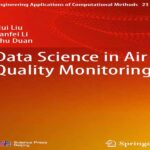



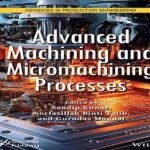
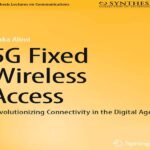


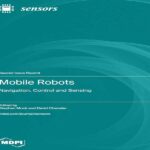
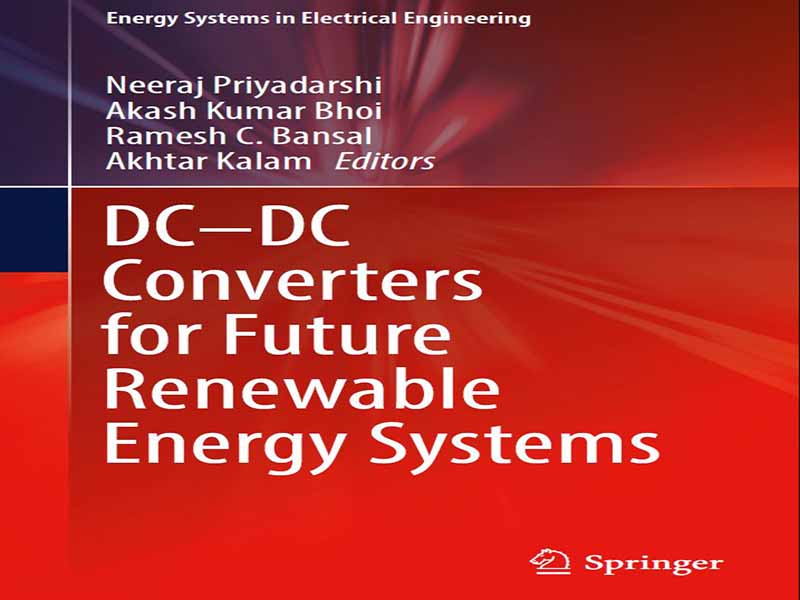

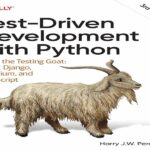



















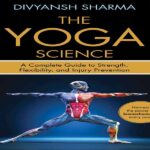
نظرات کاربران